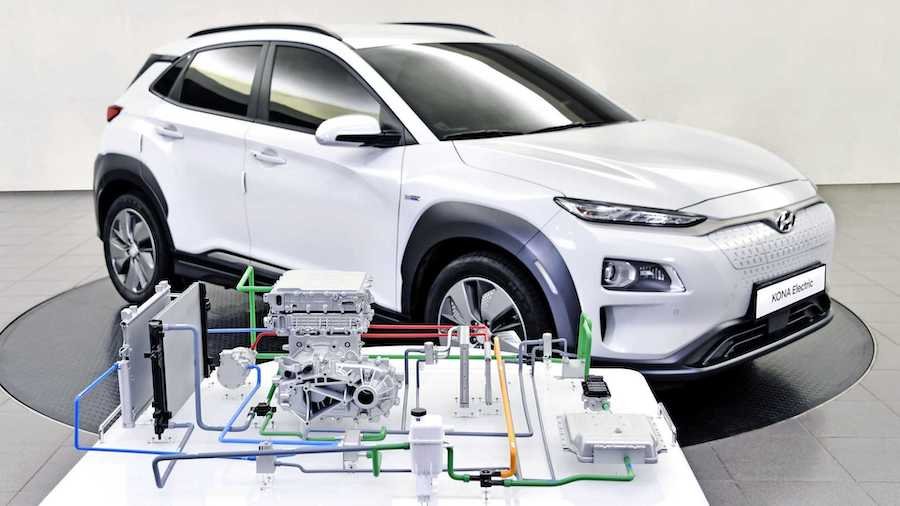Hyundai And Kia Present New Heat Pump Technology For Their EVs

Hyundai and Kia are proud to use heat pumps in their electric cars since 2014 – when the Soul EV first presented it. From that year on, the Korean brands have been only improving it to become one of their best tools in achieving high energy consumption efficiency. A recent test from the Norwegian Automobile Federation – also known as NAF – proves the benefits. The Kona Electric was the best vehicle in their winter tests.
What makes their new heat pump remarkable would be the fact that it now collects waste heat from a wider variety of components. According to the two companies, the first heat pump would get that heat from power electrics modules. They include motors, inverters, and also onboard chargers.
Kia and Hyundai managed to expand the heat sources by adding the battery pack and the slow charger to the list. Theoretically, anything that is subject to heat management could be included.
The engineers working for the Korean companies managed to achieve these improvements by doing low-temperature tests with their electric prototypes. The Tesla Model Y – the first to present a heat pump – was also involved in cold-weather testing. We wonder if Tesla decided to perform them solely due to the new heating system it chose to adopt.
The Korean automakers' case seems to be pretty compelling to demonstrate not only the heat pump efficiency but also the massive difference water-cooled battery packs have when compared to air-cooled units. According to the companies, they can have tighter cooling channels, increasing battery density by 35 percent.
A study from Korea's Ministry of the Environment showed the Hyundai Kona Electric and Kia Niro EV kept 90 percent of their driving range "in temperatures of -7°C (19°F) with the HVAC system activated." Other EVs without the heat pump had drops going from 18 percent to up to 43 percent when submitted to the same tests.
Related News
